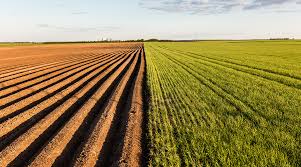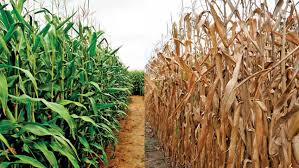Climate change is one of the most pressing global challenges today, and its impact on agriculture is profound. This article explores the relationship between climate change and agriculture, its causes and effects, and the challenges it presents. It also discusses potential solutions to mitigate these impacts.
Agriculture is both affected by climate change and a contributor to its effects. Changes in temperature, precipitation patterns, and extreme weather events influence agricultural productivity and food security. Understanding this relationship is vital for developing effective strategies to adapt and mitigate the effects of climate change on agriculture.
Understanding Climate Change: Causes and Effects
Climate change refers to long-term shifts in temperature and weather patterns, primarily driven by human activities. Here are some key causes and effects of climate change:
1. Greenhouse Gas Emissions: Human activities, such as burning fossil fuels, deforestation, and industrial processes, release greenhouse gases (GHGs) like carbon dioxide (CO2) and methane (CH4) into the atmosphere. These gases trap heat, leading to global warming.
2. Rising Temperatures: Increased GHG concentrations have resulted in higher global temperatures, leading to heatwaves and altered growing seasons.
3. Changing Precipitation Patterns: Climate change affects rainfall distribution, leading to droughts in some regions and flooding in others. This unpredictability poses challenges for farmers.
4. Extreme Weather Events: Climate change increases the frequency and severity of extreme weather events, such as hurricanes, droughts, and heavy rainfall, which can devastate crops and livestock.
5. Ocean Acidification: Rising CO2 levels contribute to ocean acidification, affecting marine ecosystems and fisheries that are vital for food security.
The Role of Agriculture in Contributing to Climate Change
Agriculture contributes to climate change through various mechanisms:
1. Greenhouse Gas Emissions from Farming: Agricultural practices, such as livestock production and the use of synthetic fertilizers, release significant amounts of GHGs, particularly methane and nitrous oxide.
2. Deforestation: Clearing forests for agricultural expansion reduces carbon storage in trees and contributes to CO2 emissions.
3. Soil Degradation: Poor soil management practices can lead to soil erosion and degradation, reducing its capacity to sequester carbon.
4. Land Use Changes: Converting natural ecosystems into agricultural land alters the carbon balance and contributes to increased GHG emissions.
5. Water Usage: Agriculture accounts for a large share of global freshwater use, and unsustainable water management can exacerbate climate change effects.
Impacts of Climate Change on Crop Production

1. Altered Growing Seasons: Changes in temperature and precipitation patterns can shift growing seasons, affecting planting and harvesting times.
2. Reduced Crop Yields: Higher temperatures can lead to heat stress in crops, reducing yields. Additionally, increased frequency of droughts can lead to water scarcity, further impacting production.
3. Pest and Disease Pressure: Warmer temperatures may enable pests and diseases to thrive, posing new challenges for crop health and management.
4. Soil Degradation: Extreme weather events, such as heavy rainfall, can lead to soil erosion and degradation, negatively impacting soil fertility and productivity.
5. Food Security Risks: Reduced crop yields can lead to food shortages, increased prices, and reduced access to food for vulnerable populations.
Effects of Climate Change on Livestock Farming
Climate change also impacts livestock farming in various ways:
1. Heat Stress: Rising temperatures can cause heat stress in animals, affecting their health, growth, and productivity. This can lead to decreased milk and meat production.
2. Water Scarcity: Changes in precipitation patterns can lead to water shortages for livestock, impacting their health and productivity.
3. Feed Availability: Climate change can affect the availability and quality of feed crops, leading to higher feed costs and decreased livestock productivity.
4. Disease Outbreaks: Altered climatic conditions may increase the prevalence of diseases affecting livestock, posing significant risks to animal health and farm profitability.
5. Economic Impacts: Reduced livestock productivity can lead to financial losses for farmers and affect overall rural economies dependent on livestock production.
Challenges and Solutions
Challenges
1. Adaptation Needs: Farmers need to adapt their practices to cope with changing climatic conditions, which may require new knowledge and resources.
2. Policy and Support: Governments must provide adequate support and policies to help farmers transition to sustainable practices.
3. Financial Constraints: Many farmers, especially smallholders, may lack the financial resources to invest in climate-resilient practices.
4. Research Gaps: There is a need for more research on climate-smart agricultural practices to help farmers adapt.
Solutions
1. Adopting Sustainable Practices: Farmers can adopt sustainable practices, such as conservation tillage, crop rotation, and agroforestry, to enhance resilience.
2. Improved Water Management: Implementing efficient irrigation systems and rainwater harvesting techniques can help manage water resources effectively.
3. Research and Development: Investing in research and development of climate-resilient crop varieties can help mitigate the impacts of climate change on agriculture.
4. Education and Training: Providing farmers with education and training on climate-smart practices can empower them to make informed decisions.
5. Policy Support: Governments should develop policies that promote sustainable agricultural practices and provide financial support for farmers transitioning to climate-resilient methods.
Read Also: Recommended Volume of Water for Fish Farming on a Concrete Pond
Soil Degradation and Climate Change: Challenges and Solutions

Soil degradation is a critical issue exacerbated by climate change, threatening agricultural productivity and food security. This article explores the relationship between soil degradation and climate change, the challenges faced, and potential solutions for farmers to maintain soil health and resilience.
Soil degradation refers to the decline in soil quality and productivity due to various factors, including erosion, nutrient depletion, and contamination.
Climate change worsens these issues by altering precipitation patterns and increasing temperatures. Understanding this connection is crucial for developing effective strategies to protect and restore soil health.
Understanding Soil Degradation: Causes and Effects
Soil degradation has multiple causes, many of which are intensified by climate change. Here are some key factors contributing to soil degradation:
1. Erosion: Wind and water erosion remove topsoil, which is essential for plant growth. Increased rainfall and severe storms due to climate change can accelerate erosion rates.
2. Nutrient Depletion: Intensive farming practices deplete soil nutrients, reducing fertility. Climate change can exacerbate this by altering nutrient cycling processes in the soil.
3. Soil Contamination: Agricultural chemicals, such as pesticides and fertilizers, can contaminate soils. Changes in climate can influence the behavior and degradation of these chemicals in the soil.
4. Compaction: Heavy machinery and overgrazing can compact soil, reducing its aeration and water infiltration. Climate-induced extreme weather can worsen soil compaction issues.
5. Salinization: Increased evaporation rates and altered rainfall patterns can lead to salt accumulation in soils, negatively impacting plant growth.
Water Scarcity and Agricultural Challenges
Water scarcity is a significant challenge for agriculture, especially as climate change alters water availability. Here are some of the effects of water scarcity on agriculture:
1. Reduced Crop Yields: Insufficient water supply can lead to drought stress in crops, significantly reducing yields and affecting food production.
2. Livestock Health: Water scarcity impacts livestock health and productivity, as animals require water for drinking and digestion.
3. Irrigation Challenges: Farmers may struggle to maintain adequate irrigation systems during droughts, leading to inefficient water use and crop failures.
4. Soil Moisture Loss: Water scarcity can lead to reduced soil moisture levels, further degrading soil health and fertility.
5. Increased Competition for Water: As water resources become scarcer, competition between agricultural and non-agricultural uses increases, complicating water management.
Read Also: Concrete Pond Management: Steps to take before introducing the Fish in the Water
Pest and Disease Dynamics in a Changing Climate

1. Range Expansion: Warmer temperatures can enable pests and diseases to thrive and expand into new areas, posing risks to previously unaffected crops.
2. Increased Pest Pressure: Higher temperatures and humidity can lead to increased reproduction rates of pests, resulting in greater infestations and crop damage.
3. Altered Life Cycles: Climate change can disrupt the life cycles of pests and pathogens, complicating management strategies for farmers.
4. Resistance Development: Increased pest pressure can lead to the development of resistance to pesticides, making control more challenging.
5. Impact on Biodiversity: Climate change can disrupt ecosystems, leading to loss of natural pest control agents and increased reliance on chemical control measures.
Adaptation Strategies for Farmers
Farmers can adopt various adaptation strategies to mitigate the impacts of soil degradation and climate change:
1. Crop Diversification: Growing a variety of crops can enhance resilience against pests, diseases, and climate variability.
2. Conservation Tillage: Implementing conservation tillage practices can reduce soil erosion and improve soil health by maintaining soil structure and organic matter.
3. Cover Cropping: Planting cover crops during off-seasons can protect soil from erosion, enhance soil fertility, and improve moisture retention.
4. Water Management: Implementing efficient irrigation systems, such as drip irrigation, can help optimize water use and maintain soil moisture levels.
5. Soil Restoration Practices: Techniques such as composting, mulching, and adding organic matter can restore soil health and improve its resilience to climate change.
Sustainable Agricultural Practices for Climate Resilience
Sustainable agricultural practices are essential for enhancing climate resilience. Here are some key practices:
1. Agroecology: Adopting agroecological principles, such as promoting biodiversity and utilizing local resources, can enhance resilience and sustainability in farming.
2. Integrated Pest Management (IPM): Implementing IPM strategies can reduce reliance on chemical pesticides and promote natural pest control methods.
3. Organic Farming: Transitioning to organic farming practices can improve soil health, enhance biodiversity, and reduce environmental impacts.
4. Precision Agriculture: Utilizing technology and data-driven approaches can optimize resource use, reduce waste, and improve productivity while minimizing environmental impacts.
5. Education and Training: Providing farmers with education and training on sustainable practices can empower them to adapt to changing conditions and enhance soil health.
Here’s the article on Sustainable Agricultural Practices for Climate Resilience structured with clear headings and bolded list numbers.
Sustainable Agricultural Practices for Climate Resilience
As climate change continues to impact agriculture, adopting sustainable practices becomes crucial for enhancing resilience and ensuring food security. This article discusses sustainable agricultural practices that help farmers adapt to climate change, the role of technological innovations, policy responses, and the importance of community engagement.
Sustainable agricultural practices aim to meet current food needs without compromising future generations’ ability to produce food.
These practices focus on environmental health, economic profitability, and social equity. Implementing sustainable practices can enhance agricultural resilience to climate change, ensuring long-term productivity and sustainability.
Sustainable Agricultural Practices for Climate Resilience
1. Crop Rotation: Alternating different crops in a sequence helps improve soil health, reduce pest and disease cycles, and enhance biodiversity.
2. Agroforestry: Integrating trees into agricultural landscapes can improve soil quality, enhance biodiversity, and provide additional income through timber and non-timber products.
3. Conservation Tillage: Reducing tillage minimizes soil disturbance, enhances soil structure, and retains moisture, leading to improved soil health and reduced erosion.
4. Cover Cropping: Planting cover crops during off-seasons helps protect the soil from erosion, improves soil fertility, and enhances moisture retention.
5. Integrated Pest Management (IPM): Combining biological, cultural, and chemical practices minimizes pest damage while reducing the reliance on chemical pesticides.
6. Organic Farming: Transitioning to organic practices enhances soil health, reduces chemical inputs, and promotes biodiversity, leading to more resilient farming systems.
Technological Innovations to Combat Climate Change
Technological advancements play a significant role in promoting sustainable agriculture and addressing climate change. Here are some key innovations:
1. Precision Agriculture: Utilizing technology, such as GPS and sensors, allows farmers to optimize inputs like water and fertilizers, increasing efficiency and reducing environmental impacts.
2. Climate-Smart Agriculture (CSA): CSA practices focus on increasing productivity while reducing emissions, enhancing resilience to climate change through techniques like improved crop varieties and resource management.
3. Remote Sensing: Satellite and drone technology can monitor crop health and soil conditions, enabling farmers to make informed decisions about resource allocation.
4. Biotechnology: Genetically modified organisms (GMOs) can help develop climate-resilient crops that are more tolerant to extreme weather conditions, pests, and diseases.
5. Digital Platforms: Mobile applications and online platforms can provide farmers with real-time information on weather, market prices, and best practices, enhancing decision-making and adaptability.
Policy Responses to Climate Change in Agriculture
Effective policy responses are essential to support sustainable agricultural practices and enhance climate resilience. Here are some key policy approaches:
1. Financial Incentives: Governments can provide subsidies, grants, and low-interest loans to encourage farmers to adopt sustainable practices and technologies.
2. Research and Development Funding: Investing in agricultural research can lead to innovative solutions that enhance resilience and productivity in the face of climate change.
3. Education and Training Programs: Implementing programs to educate farmers about sustainable practices and technologies can empower them to adapt and thrive under changing conditions.
4. Land Use Planning: Integrating agricultural policies with land use planning can promote sustainable practices and ensure the long-term viability of agricultural lands.
5. International Cooperation: Collaboration between countries can facilitate the sharing of knowledge, resources, and best practices to address climate change in agriculture globally.
The Role of Community and Stakeholder Engagement
Engaging communities and stakeholders is vital for successful implementation of sustainable agricultural practices. Here’s how community involvement contributes to resilience:
1. Knowledge Sharing: Local communities can share traditional knowledge and best practices, promoting innovative and context-specific solutions.
2. Collaborative Decision-Making: Involving stakeholders in decision-making processes ensures that policies and practices are relevant and effective for local conditions.
3. Building Networks: Strengthening networks between farmers, researchers, and policymakers can enhance access to resources, information, and support.
4. Advocacy and Awareness: Engaging communities in advocacy efforts can raise awareness of climate change impacts and the importance of sustainable practices, leading to broader support.
5. Support Systems: Community engagement can create support systems, such as cooperatives and associations, that enable farmers to access resources and share experiences.
Do you have any questions, suggestions, or contributions? If so, please feel free to use the comment box below to share your thoughts. We also encourage you to kindly share this information with others who might benefit from it. Since we can’t reach everyone at once, we truly appreciate your help in spreading the word. Thank you so much for your support and for sharing!
Read Also: Adaptive Means of Animals Coping with the Environment

